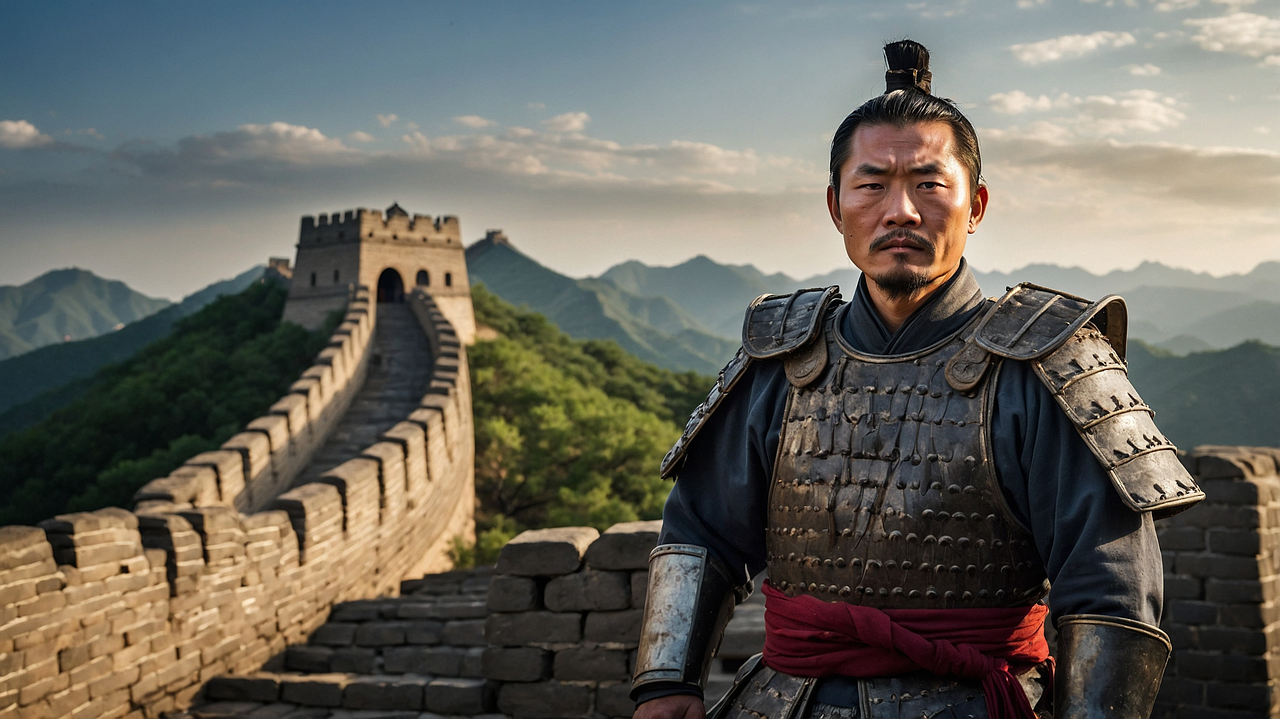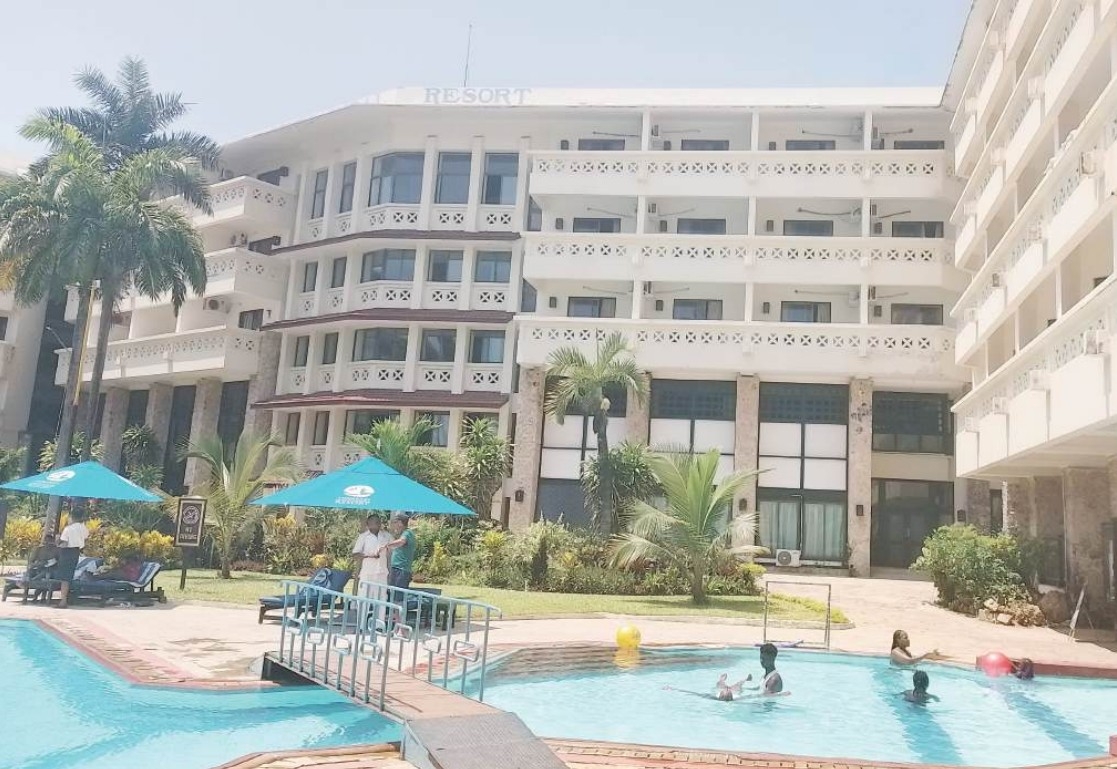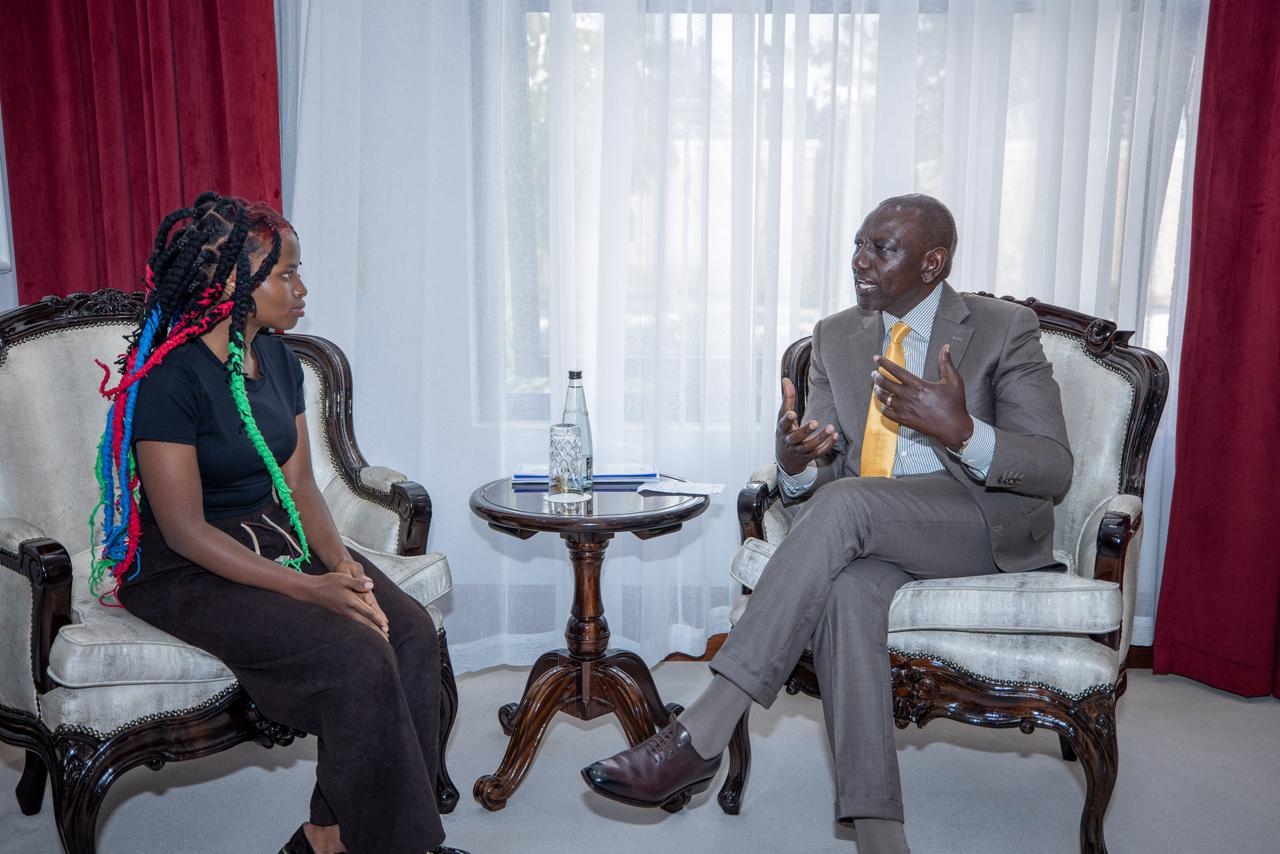
Besides making strides in development, the Chinese have also invested time, effort and resources in keeping their history, the good parts that is, alive and preserving it for posterity.
And the negative aspects? They use those as a driving force. Children are taught about the humiliation China has faced in the past, such as the opium wars, Japanese invasion and discrimination in their own country. And why they need to work hard and be a strong nation to avoid a repeat of the past.
China has revived and preserved its cultural and historical sites. It has made use of technology in these efforts, and nowhere is this best exemplified than in its museums. One such is the Museum of the Chinese Communist Party.
Opened in 2021, on the 100th anniversary of the CPC, it tells the story of the Chinese people from 1921. It maps the journey taken by the people as well as their aspirations for the future, including the country’s space and sea ambitions. The struggle, told through the use of 3D and 5D technology, evokes a sense of national pride, even in a non-Chinese person. It covers the country’s political, economic and social history.
One display that stood out was the display on evolution of living standards in just a decade. Between 1978 and 1985, for a Chinese couple to marry, they had to have a bicycle, a watch or a sewing machine; these were considered essentials. However, between 1985 and 1995, for one to marry, they either had to have a TV set, a refrigerator or a washing machine.
AT THE GREAT WALL
The one historical structure that comes to mind at the mention of the name China is the Great Wall. We visited this historical wonder on a rather cold Friday morning on the second day on the country’s five-day Labour holiday. We set off early in the morning to beat the traffic on the route, which consisted of tour buses and private vehicles.
Word of caution, if you ever set out to climb the wall but rarely exercise, you will not have it easy, to put it mildly. Nevertheless, if you’re determined, exercise or no exercise, you will get to the tower at the highest peak.
The wall was built on the mountains to keep out invaders from the north, chief among them the Mongols. It was a project that spanned more than 200 years.
During the hours we spent at the site of the wall, there were many other nationalities present, but we did not see any other Africans. If you have the means to, climbing the Great Wall should definitely be on your basket list.
I had not yet come to face to face with haggling Chinese style. Coming down the wall, I remembered I needed a souvenir. “Don’t agree to the first price they tell you,” a colleague who had already bought some items told me.
It was fun haggling with the traders with just a calculator, a smattering of Chinese words and lots of laughter. In the end, I walked away with my keepsakes, sold to me at way lower prices than initially stated, but with the feeling that maybe I gave up too easily and should have made a push for even lower prices.
TEMPLE OF HEAVEN
In ancient China, emperors considered themselves the sons of the heavens. A disaster was, therefore, seen as a sign the emperor had lost favour with the heavens. The monarchs would go to the Temple of Heaven to pray for a good harvest.
This circular-shaped blue structure is located in Beijing, which has been the country’s capital for more than 3,000 years, besides being the cultural and political centre. It was built near the Forbidden City, which was the emperors’ home. The temple’s shade of blue is unique to the structure; no other building can be painted that particular colour.
The downside is, you can only peak inside but cannot go in. A peak inside reveals what looks like four golden thrones with blue details. Red pillars support the walls, while some more red pillars, but these ones adorned with golden leaves, flowers and trees, support the roof, which is decorated with paintings of dragons among other creatures.
Towards the end of the building is a raised altar with four steps leading to it. Behind the main temple is a smaller building, nowhere near as magnificent as the temple but charming all the same.
The temple is situated on 674 acres. There are more than 3,000 old trees in Beijing, 800 of these are found at the temple. They are all more than 200 years old. A green plaque on a tree means it is more than 200 years old, while a red plaque means it is more than 300 years old.
The temple’s park is a favourite with the locals, especially the elderly, whom you will find exercising in the morning, catching up with friend or making music. It also attracts a large number of domestic and foreign tourists. When your eyes first fall on the building, it’s easy to understand why.
Like most tourists at the site, we found ourselves taking lots of photos and trying out various angles to capture the conical shape of the temple and get the perfect photo.
A few Chinese approached us for photos, which we politely obliged. Soon, however, more people gained the courage to approach us, and for some minutes, there was a frenzy of photo-taking.
There were Ethiopian women in our group, and they had worn their traditional dress, called habesha kemis. They took photos with Chinese ladies dressed in their traditional dress. It was an awesome East Africa-meets-East Asia moment, and the setting couldn’t have been more appropriate.
HISTORICAL MARKETS
The one place to feast your eyes on ancient architecture in Beijing is the historical market of Nan Luo guxiang (also known as Hutong, which means alley).
We visited the place on weekday and even though it looked packed to us, our hosts explained that that was nothing compared to weekends and public holidays when it is usually a crush. You will find all manner of merchandise here, from food to Chinese tea to modern and traditional attires, cosmetics and jewellery made from silver.
We came face to face with the crush when we visited Qianmen Street, another popular ancient market. This time around, our visit was not only on a weekend but also smack in the middle of the country’s five-day labour holiday.
One trend that appears to be popular among young Chinese girls is to dress up in traditional attire. One of our hosts explained that one can rent the clothes for some hours and for less than 200 yuan, one can also have their face and hair done in the ancient style for a full traditional experience.
The result is spectacular, judging by the girls I saw at Qianmen Street and later in Changsha city, which was our next stop.
YUELU ACADEMY
The flight from Beijing to Changsha city in Hunan province took slightly over two hours. The city is located towards the southern part of the country. Unlike Beijing, Changsha’s climate is humid (think Mombasa but without much of our coastal city’s clamminess). The province is surrounded by green mountains.
China has four ancient academies. One of these is Yuelu Academy in Changsha, which was established in 976 by the city’s mayor. It is now an arm of Hunan University and offers four majors, including philosophy, history and religion. When we visited, many other tour groups, including schoolchildren, were being shown around. We could not go into the lecture rooms as students were in session.
Nonetheless, there was a lot to see, including the school’s leisure gardens and Chairman Mao’s dorm. The PRC’s revered founder was once a student here. Stepping into the academy feels like stepping back in time, with its ancient architecture and trees, some of which are estimated to be 1,000 years old, given the institution’s long history. Its motto is ‘Seeking truth from facts’.
According to the tour guide, a plaque on the central axis with dragons on it was bestowed on the academy by the emperor in 1696. The words on the plaque read: ‘By studying, we reach ultimate unity between man and nature.’ This plaque, however, is a copy of the original, which is kept in safety.
A second plaque in the academy was bestowed by the emperor’s grandson. This plaque is the original and is made from cherished expensive wood. Two people shared a dorm, which is 10 square metres. In ancient times, the academy would have 400 teachers and 800 students at any given time.
The academy’s library holds more than 100,000 books, the oldest of which date back to the Yuan dynasty. In the old days, the academy offered one major — philosophy. The tour guide explained that lectures were held in the academy’s central axis and teaching was by debate. Teaching time was only 30 minutes and self-study was emphasised. Students would begin their day by paying tribute to Confucianism.
YUEYANG TOWER
China has three ancient towers considered to be of cultural significance. One of them is Yueyang Tower (Yueyanglou) on the shore of Lake Dongting in Yueyang city, Hunan province.
This 1,200-year-old site is popular with tourists and famous for its unique architecture, poems (including the famous ‘Memorial to Yueyang Tower’ that children learn to recite in school) and fascinating history, including a plaque with Mao’s calligraphy.
Only 60 people can be in the tower at any given time. This is to protect the wooden structure, as a signpost outside the tower explains. The queue was not too long and being inside the tower was worth the few minutes’ wait.
Next to the tower is an ancient market where, yes, we haggled some more and walked away with keepsakes. The fans sold at the tower were, however, quite pricey, and the traders would not budge from their asking price. This was new, considering our bargaining experience so far.
One of the Chinese members of our team explained that that could be because of the material used to make them (silk) and the intricacy of the patterns. The more intricate the pattern, the more effort went into making the fan, hence the high prices. But there was so much more to buy, and the fun part? The hand gestures and lots of head shaking, or nodding, and tapping away at the calculator.
EMPEROR’S CONCUBINES’ TEMPLE
It had been grey and wet, but warm, during our first few days in Hunan, but we woke up to a sunny morning on Mother’s Day.
Even the weather seemed to recognise the import of the day. This was also the day we visited Junshan Park, also known as love island. This heart-shaped island on Lake Dongting in Yueyang is popular with couples and newlyweds seeking a perfect spot for perfect wedding photos.
We took a shuttle to the island. Our guide explained that the lake floods from June to July as a result of the rains, so visitors take a boat during that time.
A Zambian colleague remarked that this reminded him of the annual Kuomboka ceremony back home. He then explained that the Zambezi River floods during the rainy season, forcing the king of the Lozi people to move to higher ground. The ceremony is called Kuomboka, and it is usually a grand affair, drawing large crowds of tourists.
Junshan island is steeped in folklore. On it stands a temple, the first to be built in the south, that was put up more than 2,000 years ago in honour of two concubines of an emperor called Shun. The current temple was rebuilt in 1986.
The island has black-spotted bamboos; our guide explained that they are unique to the park. Legend has it that as the concubines mourned their husband, their tears fell on the bamboos, which consequently developed the black spots.
Our team was invited to burn incense in the concubines’ temple, but being mostly Christians and Muslims, we gave it a pass.
On the island is a deep, read bottomless, well, which is believed to lead to the palace of a dragon king. Legend says the dragon king’s daughter was married to a man who mistreated her.
A scholar named Liuyi met her one time and jumped into the well to deliver a letter to her father, detailing the cruelty she was undergoing. The king came and killed the cruel husband, and she and Liuyi got married.
Walking into the island felt like being enveloped in a lush green cocoon. It’s a bird watcher’s paradise and times just seemed to fly by as we explored the island’s serene grounds, temples, pavilions and nature trails.
ZHANGGUYING VILLAGE
Eighty kilometres southeast of Yueyang city lies Zhangguying village. This was our final stop. The village is named after its founder Zhang Guying. It is estimated there are about 2,600 descendants of Zhang Guying with the same surname living in the village, and that about 26 generations have lived there.
The village is built against a backdrop of a green dragon-shaped mountain. Various generations of the family have left their mark on the village with improvements, which extended from the centre outward, giving the village its cylindrical shape. The village was bombed by the Japanese during the invasion but it is still standing.
As with many other countries, more young people are turning their backs on rural life and moving to the cities in search of better opportunities. The elderly people left behind no longer have the energy to work their farms.
The government has, therefore, come up with a programme to renovate such historic villages to attract tourists and generate much-needed revenue. It also organises concerts and cultural festivals in the village, which are crowd pullers.
Our guide explained that the village’s main door, which is often kept closed to preserve it, was opened especially for us.
At the end of a long but satisfying day, as we slowly made our way to the hotel in the city traffic, I saw a scene that made me forget about my fatigue. A woman was chasing her young son with a broom on the pavement. I quickly drew the attention of the Gambian journalist seated behind me and we both burst out laughing.
“It’s like watching an African mother,” she remarked. “Exactly! It took me back to my childhood days, when my mum would run after me and my siblings with twigs!” I replied.
The countdown to the end of our stay had begun. And with it naturally came a reflection of our time there. Like I said in the beginning, it is one thing to read about China’s tremendous achievements, and another to actually almost touch it and feel it.
We came to China at just about the time US President Donald Trump had slapped 245 per cent tariffs on Chinese imports. All the panellists we interacted with were in agreement that China would not give in to Trump. That they would not be pushed around.
We landed in Africa to the breaking news that Trump had paused his tariffs to give room for negotiations. That pretty much sums up the rise of China.












